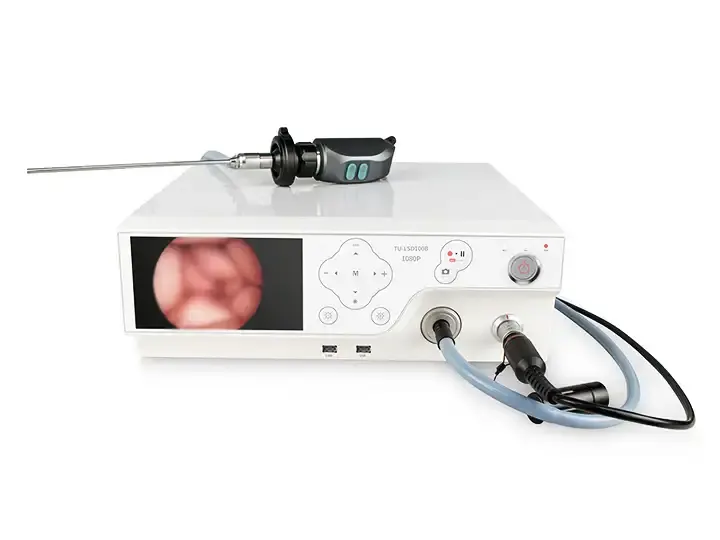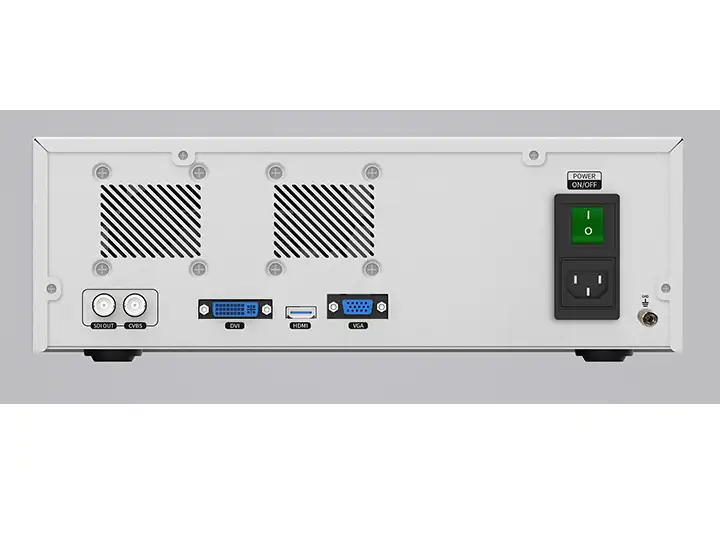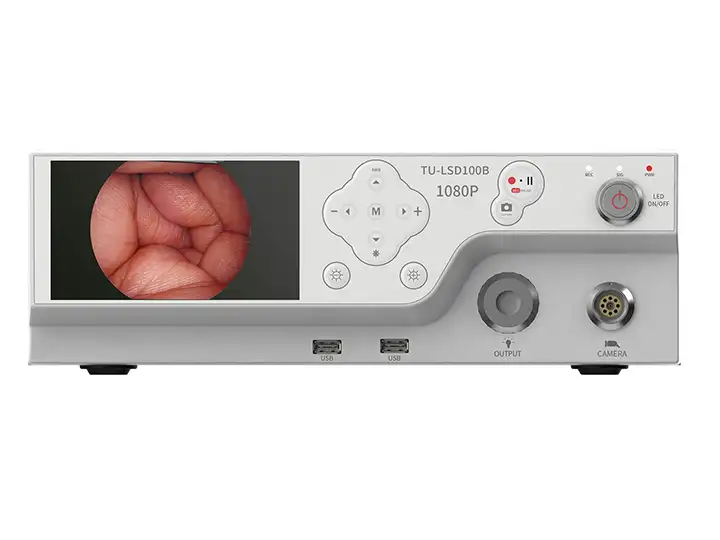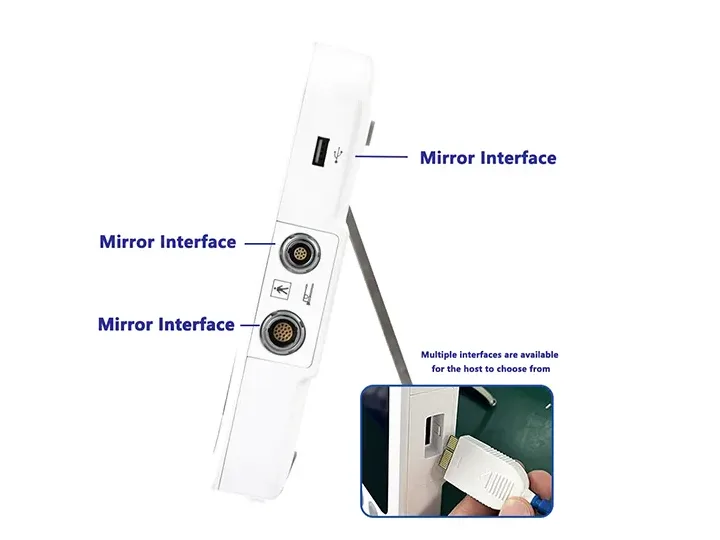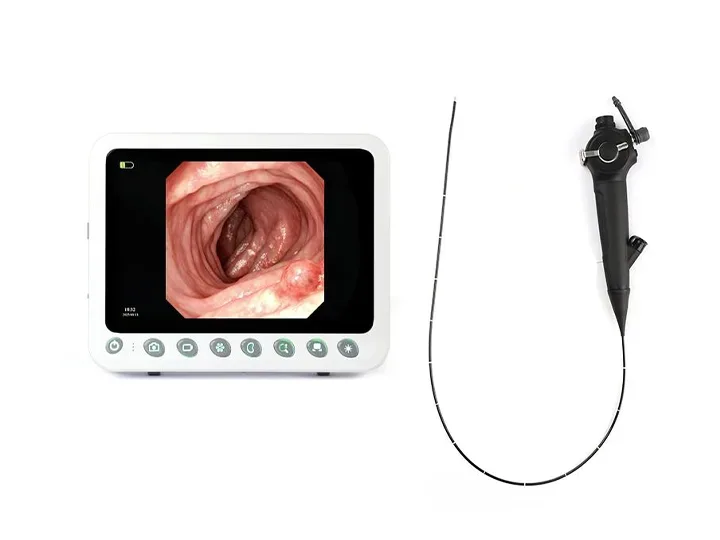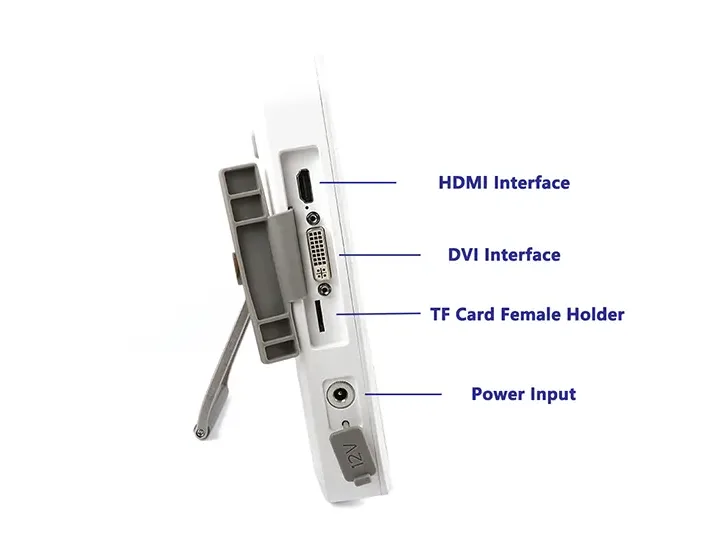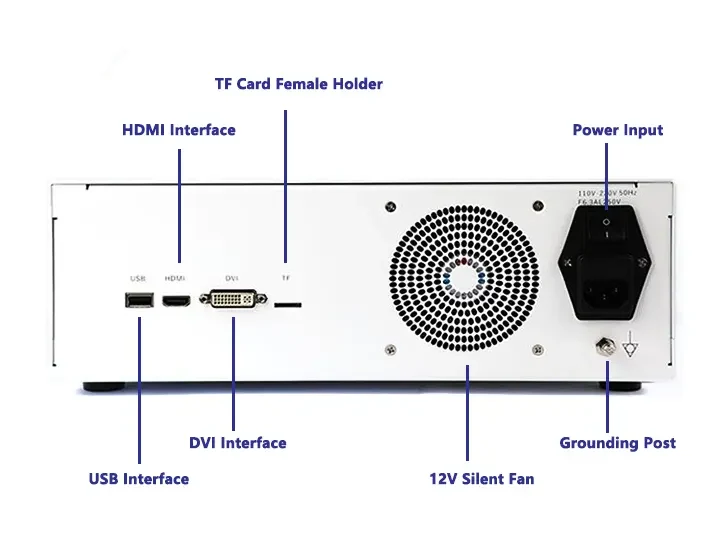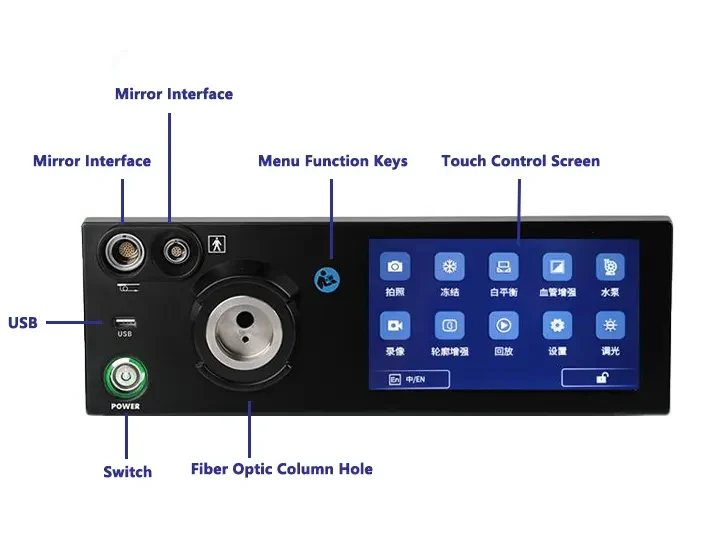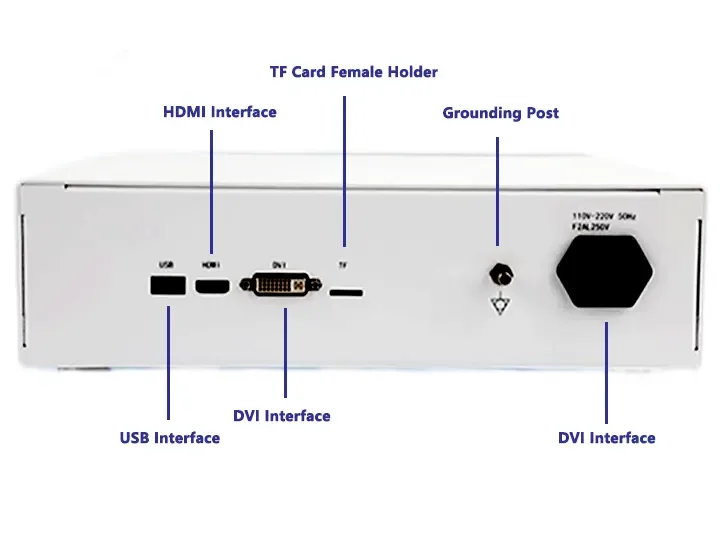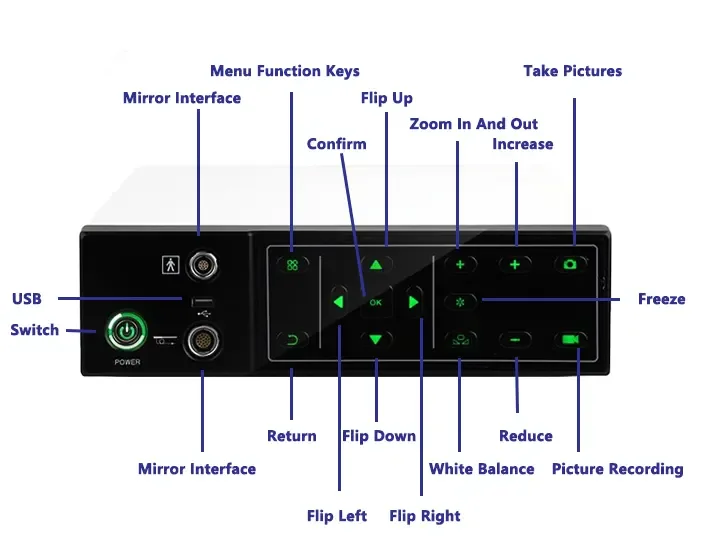4K Medical Endoscope Host: Ultra-HD Visualization
This host delivers 4K UHD imaging (3840×2160 resolution) for medical endoscopes, enhancing tissue detail visibility during examinations. The 1.5kg lightweight design enables portable use across ENT and gastrointestinal endoscope medical procedures.
Key Technical Specifications
4K Ultra-High Definition imaging
Integrated tablet form with carrying handle
Physical control knobs for sterile environments
Minimum 4 hours continuous operation
Standard HDMI/USB 3.0 video outputs
Clinical Applications
Diagnostic accuracy: Clear visualization of vascular networks and mucosal abnormalities
Workflow efficiency: Rapid startup reduces preoperative preparation
Deployment flexibility: Suitable for clinics, operating rooms, and bedside use
Operational Summary
Designed for straightforward integration with standard medical endoscopes, this host prioritizes reliable imaging performance and mobility for daily clinical practice.
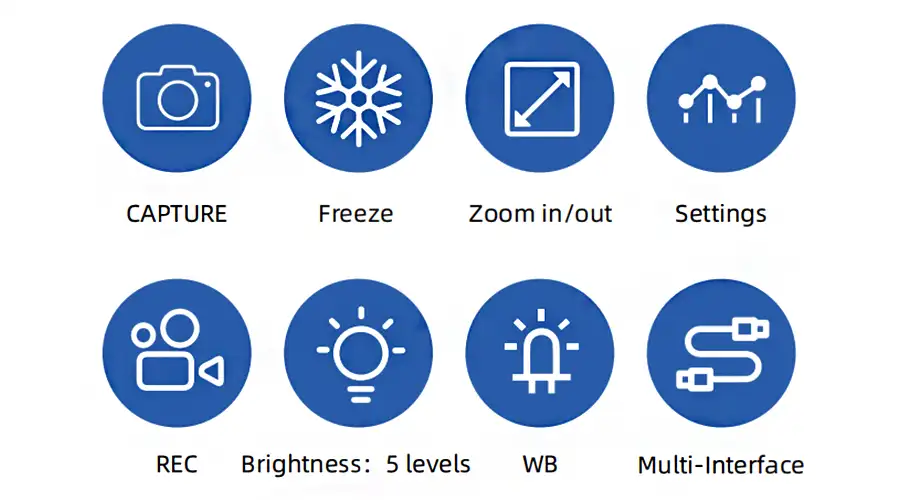
Wide Compatibility
Wide compatibility:Ureteroscope, Bronchoscope, Hysteroscope, Arthroscope, Cystoscope, Laryngoscope, Choledochoscope
Capture
Freeze
Zoom In/Out
Image Settings
REC
Brightness: 5 levels
WB
Multi-Interface
Clear Visualization For Confident Diagnosis
HD digital signal with structural enhancement
and color enhancement
Multi-layer image processing ensures every detail is visible
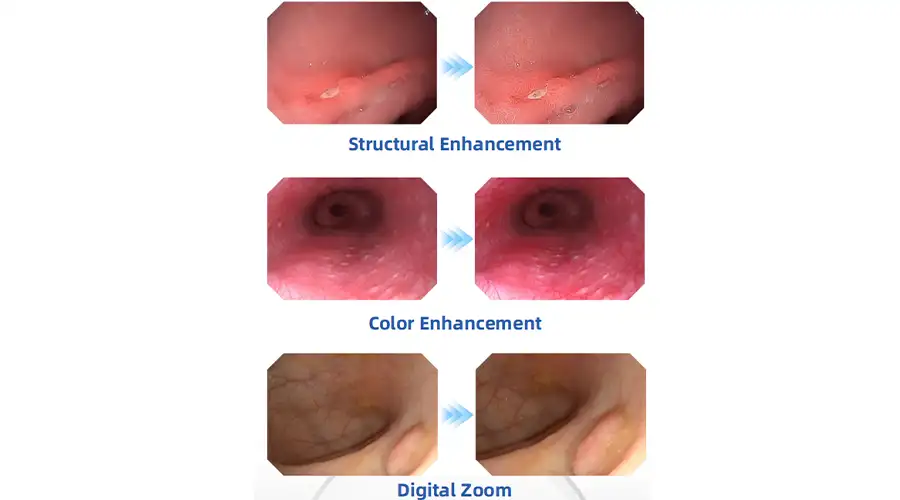
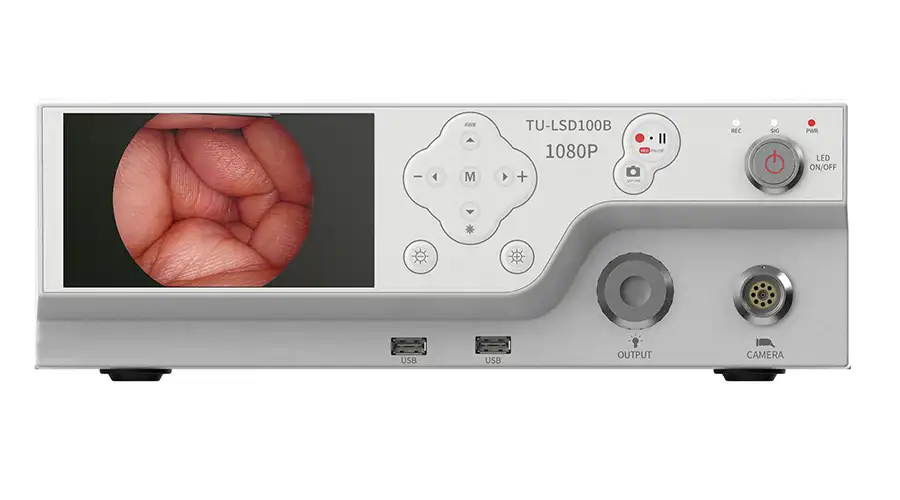
Brightness Memory Function
Equipped with a built-in video recording system, built-in light source, and built-in display screen;
Two built-in USB full HD image storage and 6-inch screen display;
Multiple output signals, can be connected to an external display;
One click freeze, one click white balance, one click zoom in and out;
Equipped with high-definition camera/video recording function;
Brightness memory function, the brightness of the LED light source is not initialized with shutdown, and automatically remembers the brightness before shutdown after startup
The 4K medical endoscope host is the core equipment for modern minimally invasive surgery and precision diagnosis and treatment. It provides excellent visualization solutions for clinical use through ultra-high-definition imaging, intelligent image processing and multi-functional integration. The following is a comprehensive analysis from five aspects: technical principles, core advantages, clinical applications, product comparison and future trends.
1. Technical principles
1. Ultra-high-definition imaging system
4K resolution (3840×2160): 4 times that of Full HD (1080p), with a pixel density of 8.3 million, which can clearly display 0.1mm-level tissue fine structures (such as capillaries and mucosal glands).
HDR (high dynamic range) technology: dynamic range>80dB, avoiding overexposure of highlights or loss of details in dark areas, and enhancing the layering of surgical vision.
2. Optical and image processing technology
Large target CMOS sensor: 1 inch and above, single pixel size ≤2.4μm, signal-to-noise ratio (SNR)>40dB under low illumination.
Optical zoom + electronic magnification: supports 20~150 times magnification, combined with NBI (narrow band imaging) to clearly observe the tumor boundary.
Multispectral imaging: In addition to white light, it supports NBI (415nm/540nm), IR (infrared), fluorescence (such as ICG) and other modes.
3. Intelligent image engine
Dedicated ISP chip (such as Sony BIONZ X): real-time noise reduction, edge enhancement, color restoration.
AI algorithm acceleration: Real-time AI assistance (such as bleeding detection, polyp classification) through GPU (such as NVIDIA Jetson) or FPGA.
2. Core advantages
Advantage dimensions Specific performance
Imaging quality 4K+HDR provides a clearer surgical field, reduces visual fatigue, and reduces the risk of misoperation
Diagnostic accuracy The early cancer detection rate is increased by 30% (compared to 1080p), and the submucosal tumor recognition accuracy reaches 0.2mm
Surgery efficiency Integrated electric knife and ultrasonic knife control, reducing equipment switching time and shortening the operation time by more than 20%
AI assistance Real-time marking of lesions (such as polyps, tumors), intelligent alarm (bleeding risk), automatic generation of structured reports
Compatibility Supports multiple types of mirrors such as hard mirrors, soft mirrors, and arthroscopy, and is compatible with mainstream brands (Olympus, Stryker, etc.)
Remote collaboration 5G+ low-latency encoding (H.265) realizes 4K live broadcast and supports expert consultation in multiple locations
3. Clinical application
1. Surgery
Laparoscope: 4K imaging helps fine separation (such as nerves and blood vessels), reduces secondary damage, and makes lymph node dissection in radical gastrectomy more thorough.
Thoracoscopic: Clearly display mediastinal lymph nodes and improve the accuracy of lung cancer staging.
Arthroscopy: observe micro-damage to cartilage (<1mm) and improve the accuracy of meniscus repair.
2. Endoscopic diagnosis and treatment
Gastroenteroscope: NBI+4K magnification to identify early gastric cancer (detection rate of type IIb lesions>90%).
Bronchoscope: combined with fluorescence navigation to locate small lung nodules (≤5mm).
Urinary endoscope: precise lithotripsy to reduce thermal damage to ureteral mucosa.
3. Teaching and scientific research
Surgery video: 4K video is used for postoperative review and technical training.
3D modeling: reconstruct a three-dimensional tumor model based on multi-angle images to assist preoperative planning.
4. Comparison of mainstream products
Brand/model Resolution AI function Featured technology Price range
Olympus VISERA 4K 4K HDR CADe polyp recognition Dual LED light source, low latency transmission $80,000~120k
Stryker 1588 4K 4K/3D Intelligent depth of field adjustment Wireless image transmission, integrated energy platform $150,000+
Fuji LASEREO 4K 4K+BLI Real-time color optimization Laser light source, ultra-low noise $90,000~130k
Mindray MVS-9000 4K Domestic AI chip 5G module, high cost performance $40,000~60k
5. Future trends
8K popularization: resolution is further improved (7680×4320), but the data bandwidth (≥48Gbps) problem needs to be solved.
AI deep integration: upgraded from diagnostic assistance to surgical navigation (such as automatic avoidance of blood vessels).
Wireless: Eliminate cable constraints (such as Wi-Fi 6E transmitting 4K images).
Multimodal fusion: Combine OCT and ultrasound to achieve a "perspective" effect.
Cost reduction: Domestic CMOS/optical modules drive prices down by 30%~50%.
Summary
The 4K medical endoscope host is reshaping the standard of minimally invasive surgery through ultra-high-definition imaging, intelligent processing, and multi-functional integration. Things to pay attention to when choosing:
Clinical needs: NBI+AI models are preferred for early cancer screening, and 3D/fluorescence functions are required for complex surgeries.
Scalability: Whether it supports 8K upgrades or modular expansion.
Cost-effectiveness: Domestic equipment (such as Mindray) is close to the performance of international brands, and the price advantage is significant.
It is estimated that the global 4K endoscope market size will exceed $5 billion in 2026, and technological iteration will further promote the development of precision medicine.
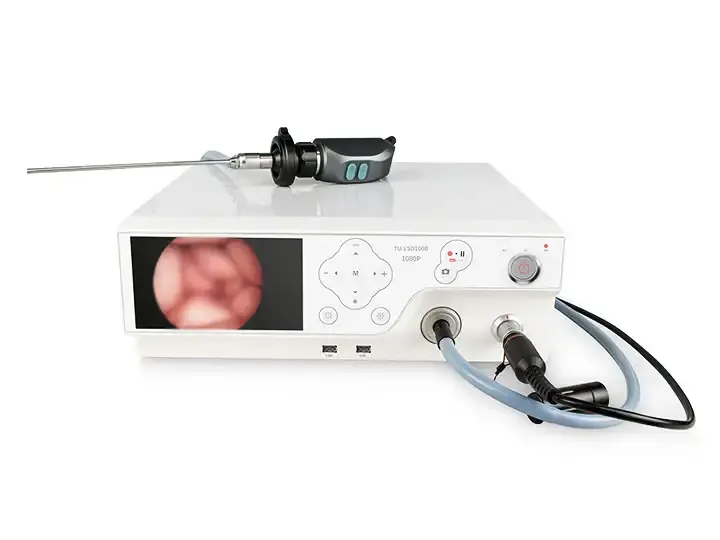
Faq
-
What are the improvements of 4K endoscope host for surgery?
4K ultra high definition imaging can clearly display subtle blood vessels and mucosal structures, greatly improving the early detection rate of lesions, while reducing visual fatigue for surgeons, making surgical operations more precise and safe.
-
Does the 4K host require a special monitor?
It must be paired with a dedicated display that supports 4K resolution and has medical certification. Ordinary displays cannot present real picture quality, which will affect diagnostic accuracy.
-
Is the data storage requirement for the 4K endoscope host high?
4K video files have a large volume and require a high-capacity professional storage device. It is recommended to use a medical grade SSD or NAS system to ensure stable read and write operations and long-term storage.
-
Can the 4K host be compatible with regular endoscopes?
Most 4K hosts are backward compatible with 1080P endoscopes, but the image quality may degrade. To fully utilize the advantages of 4K, it is necessary to use dedicated 4K endoscopes and adapters.
Latest articles
-
How XBX Cystoscope Supplier Ensures Quality and Precision for Hospital Procurement
Discover how the XBX Cystoscope Supplier provides hospitals with high-precision, OEM-ready endoscopy systems built for reliability, safety, and consistent imagi...
-
How XBX Bronchoscope Factory Delivers Reliable OEM Systems
Discover how the XBX Bronchoscope Factory ensures quality and reliability through advanced OEM manufacturing, optical precision, and strict quality control.
-
How XBX Laparoscope Minimizes Surgical Trauma in Abdominal Surgery
Discover how the XBX Laparoscope reduces surgical trauma through precision imaging, minimal incisions, and faster recovery in modern abdominal procedures.
-
How XBX Hysteroscope Detects and Removes Uterine Polyps
Discover how the XBX Hysteroscope enables precise detection and removal of uterine polyps, improving accuracy, safety, and comfort in women’s health care.
-
What Is an XBX Flexible Ureteroscope for Stone Removal?
Learn how the XBX flexible ureteroscope improves access, visibility, and efficiency in ureteral stone management with 4K imaging and ergonomic control.
Recommended products
-
Gastrointestinal medical endoscope desktop host
Gastrointestinal medical endoscope desktop host provides 4K imaging for procedures, enhancing diagno
-
Gastrointestinal Endoscope Host
Gastrointestinal Endoscope Host provides 4K medical imaging for medical endoscopes, enhancing diagno
-
Desktop medical endoscope host
Desktop medical endoscope host delivers HD imaging for endoscopy medical endoscopes, enhancing diagn
-
multifunctional medical endoscope desktop host
Multifunctional medical endoscope desktop host delivers HD imaging for endoscopy medical endoscopes,

